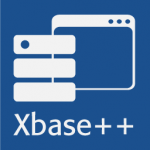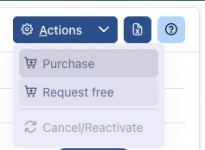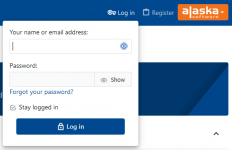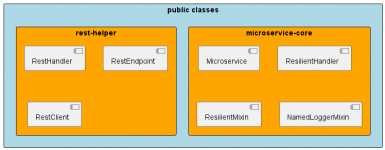Articles
You are using an out of date browser. It may not display this or other websites correctly.
You should upgrade or use an alternative browser.
You should upgrade or use an alternative browser.
Categories
-
How to... 28
I Love Xbase++ (ILX)
The portal for Xbase++ developers worldwide
-
Why configuration of your PostgreSQL Server is essential!
Background As you may have already realized, a PostgreSQL server or any SQL server in general is a "relatively" complicated story. The reason for that is basically that the server with the planner tries to replace you as a human. In ISAM you have the data model in mind, also the requirements of... -
Explore Xbase++ Why re-implementation of software systems so often fails
The re-implementation of existing legacy software systems often faces significant challenges, and understanding these can illuminate why such projects frequently fail. This little write-up is far from complete but tries to create awareness regarding these important and very often underrated... -
V2.0 Remote Filters in Xbase++ with PostgreSQL ISAM Emulation
Xbase++ developers often use ISAM (Indexed Sequential Access Method) for data management because of its efficiency and straightforward approach to handling database operations. Moving to PostgreSQL, a robust SQL database, offers enhanced capabilities but requires an understanding of new... -
Design Understanding Member Variables and Visibility Design in Xbase++
Introduction When working with object-oriented programming (OOP), the concept of member variables and their visibility is fundamental. Xbase++ follows these principles, offering various visibility levels for member variables in classes. This article intends to explore these concepts in the... -
V2.0 Using SQL Constraints for Data Integrity in Xbase++ with PostgreSQL
Background Xbase++ allows seamless integration with SQL backends like PostgreSQL using the DacSession() object. When working with SQL databases, enforcing data integrity through application logic alone is not always sufficient. Native SQL constraints (such as CHECK, UNIQUE, or FOREIGN KEY)...
Filters
Show only:
Loading…
Overview
This document serves as a cheat sheet for the syntax of the regular expressions that are supported in the Xbase++ Workbench "Find Text" dialog.
By checking the item "Regular expressions" the dialog allows users to define simple regular expressions for searching in the current file or...
Background
The Advantage Database Server (ADS), commonly used with Xbase++, has long served developers with its robust ISAM capabilities and data dictionary features. However, when it comes to enforcing data integrity rules, ADS has some notable limitations—it does not support constraints such...
When displaying images in Xbase++, you might encounter image files that appear rotated or flipped. This often happens with JPEG pictures taken with mobile phones whose cameras tend to save pictures with a constant aspect ratio, regardless of the device's orientation at the time a picture is...
Background
Xbase++ allows seamless integration with SQL backends like PostgreSQL using the DacSession() object. When working with SQL databases, enforcing data integrity through application logic alone is not always sufficient. Native SQL constraints (such as CHECK, UNIQUE, or FOREIGN KEY)...
With the release of Xbase++ Build#2187, new features such as SmartOrders and RemoteFilters have been introduced, bringing significant changes to how ISAM-compatible orders are implemented. As a software developer working with Xbase++, it's a good idea to understand these changes, especially when...
Reg-free COM allows using a copy-deployment for applications depending on a COM/ActiveX component, which means that the COM/ActiveX component can be used without prior registration. The same process also can be used for auto-registering .Net-based components compiled to expose themselves to...
Xbase++ developers often use ISAM (Indexed Sequential Access Method) for data management because of its efficiency and straightforward approach to handling database operations. Moving to PostgreSQL, a robust SQL database, offers enhanced capabilities but requires an understanding of new...
For developers working with Xbase++ on Windows operating systems with more than 32 logical processors, this article is a must-read as it explains how the SetLogicalProcessor() function operates in general and specifically with more than 32 logical processors. This function is designed to manage...
When working with databases, one of the most critical and costly tasks developers face is data model maintenance. The ease with which data structures can be managed can make a significant difference in the amount of time and effort developers spend. In this article, we will examine the...
Introduction to Software Modernization
Today's modernization of legacy software systems has become a critical decision for any organization. The choice between software migration and re-implementation is a strategic one, each with distinct advantages and challenges. This discussion is...
Translating text from English to German using Mozilla Firefox or Google Chrome, you can use the following methods. Here’s a step-by-step guide for each method:
Using Firefox Add-ons
Open Add-ons Menu: Click on the menu button (three horizontal lines) in the top-right corner of Firefox. Select...
In software development, a monolithic object or class refers to a design where a single class performs a variety of functions that could logically be separated. These classes for example handle data access (like database queries), business logic (application-specific rules), and sometimes even...
You often read "ISAM" in newsletters and other communications from Alaska Software. And many people have heard it or know it from the inside out, but someonly have a vague idea of what it means. If you belong to this group, then it's worth reading this short article.
The good news first: if you...
Introduction
When working with object-oriented programming (OOP), the concept of member variables and their visibility is fundamental. Xbase++ follows these principles, offering various visibility levels for member variables in classes. This article intends to explore these concepts in the...
Please log in to the ASI portal.
Note: The ASI portal requires the same log in credentials as the ILX portal. If you never have logged in to ILX please see this article which describes how to initially log in and get your credentials.
As soon as you successfully logged in to ASI portal you...
The ILX Portal is very important and indispensable for an Xbase++ developer for several reasons.
ILX ("I Like Xbase++") is the knowledge database all about Xbase++. Here you will find short tips & tricks for Xbase++, but also detailed in-depth articles on many topics such as SQL with Xbase++...
Prolog
Using many small services, known as microservices, is a popular way to build applications. But, working with microservices can be very complicated. However, the complexity arises not from the Xbase++ business logic code - a domain in which an Xbase++ developer is highly proficient - but...
The re-implementation of existing legacy software systems often faces significant challenges, and understanding these can illuminate why such projects frequently fail. This little write-up is far from complete but tries to create awareness regarding these important and very often underrated...
Introduction:
In this how-to article, we will explore how to efficiently process CSV data using SQLite. Subsequently, we'll demonstrate how to access SQLite databases using the USqlStatement class to execute arbitrary SQL commands.
Prerequisites:
Before we dive into the process, make sure you...
Background
Microservices architectures consist of loosely coupled, reusable, and specialized components that often operate independently. Microservices also use a high degree of cohesion, also known as bounded context. Bounded context refers to the relationship between a component and its data...
Latest articles
-
Xbase++ Workbench's Regular Expression Engine Cheat-SheetOverview This document serves as a cheat sheet for the syntax of the regular expressions that...
- Anna Hristova
- Updated:
- 2 min read
-
Design Understanding Member Variables and Visibility Design in Xbase++Introduction When working with object-oriented programming (OOP), the concept of member...
- Steffen F. Pirsig
- Updated:
- 3 min read
-
Reviewing Primary Key Definitions When Migrating from ADS to PostgreSQL with Xbase++ ISAM EmulationBackground The Advantage Database Server (ADS), commonly used with Xbase++, has long served...
- Steffen F. Pirsig
- Updated:
- 2 min read
-
Correcting Image Orientation Using EXIF Metadata in Xbase++When displaying images in Xbase++, you might encounter image files that appear rotated or...
- Andreas Herdt
- Updated:
- 3 min read
-
V2.0 Using SQL Constraints for Data Integrity in Xbase++ with PostgreSQLBackground Xbase++ allows seamless integration with SQL backends like PostgreSQL using the...
- Jeffrey Wulf
- Updated:
- 3 min read
















